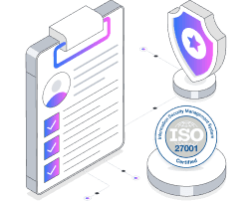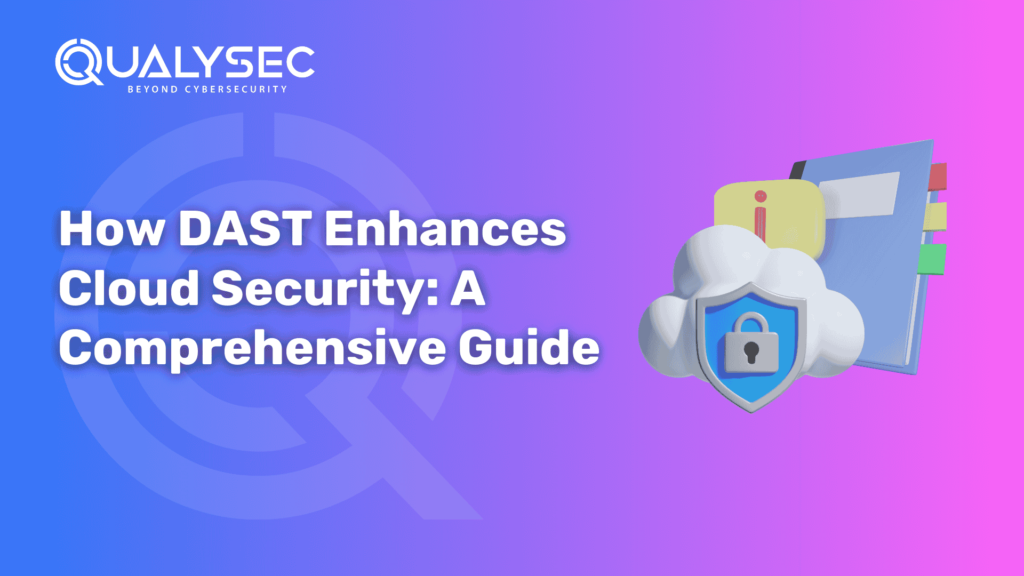How DAST Enhances Cloud Security: A Comprehensive Guide
With cloud computing gaining prominence in the digital world, more importance is being laid on having strong measures of security. Cloud environments are dynamic, and they introduce unique vulnerabilities that traditional security measures do not seem to detect. Dynamic Application Security Testing (DAST) comes into play at this point. DAST differs from the static security testing in that it examines applications in their environment of runtime and reveals vulnerabilities that occur during real execution. Considering that the number of data breaches in the cloud grew 56 percent in the past year, companies need to have proactive security plans to face risks. DAST helps to make the cloud more secure by simulating real-world attacks against the authentic configuration and API security. Qualysec Technologies is here to take you through how DAST helps secure the cloud, what the best practices to implement it, and the challenges that you should consider. As a cybersecurity professional or a business owner, it is critical to understand the role played by DAST in leading dynamic app security testing for cloud security to establish a resolute, compliant and secure cloud infrastructure. Understanding DAST Dynamic Application Security Testing (DAST) is a security testing method that uses the applications in execution state to discover vulnerabilities that can be exploited by the evil men. While the Static Application Security Testing (SAST) analyzes source code, DAST interacts with the application from the outside, emulating attacks to find security weaknesses. The automated scan of the common vulnerabilities like SQL injection, XSS and security misconfigurations by the DAST tools. DAST gives you an proactive approach to identify and resolve security vulnerabilities which can be exploited. The Importance of Cloud Security Another huge revolution of cloud computing is the way businesses operate, and it provides scalability, cost effectiveness, and accessibility to businesses. Nevertheless, with the shift of organizations’ critical data and applications to the cloud, they are increasingly susceptible to a progressively bigger number of security threats. It is no longer an option to be in leading dynamic app security testing for cloud security. The Cloud Threat from Rising Cybersecurity Threats As businesses are adopting cloud technology, the cyber threats against the cloud environment are growing rapidly. As explained in the 2023 cybersecurity report, overall cloud-related security breaches have risen 56% year on year, and misconfigured cloud settings account for 45% of reported incidents. Diagonal attack exploits the scheme designer’s cognitive fallacies about online threats for their strength. A lack of secure cloud security can cost businesses their financials, their reputation and legal troubles. Data Protection and Privacy Compliance The protection of data is of primary importance in cloud security, so it is important to comply with industry regulations (for example, GDPR, HIPAA, ISO/IEC 27017, PCI-DSS). Because they store and process great amounts of personal and financial data in the cloud, many organizations highly count on cybercriminals. Heavy fines, legal repercussions and loss of the customer’s trust can occur if the security regulations are not followed by the company. Cloud providers are using encryption, multi-factor authentication (MFA), and identity and access management (IAM), among other things, as methods of protecting data. But businesses also have to secure their cloud infrastructure by setting up security settings, keeping a check on access requests and following cloud security best practices. Business Continuity and Disaster Recovery Cyberattacks or data breaches can likewise cause irreparable financial damages to the business. Business continuity has always been a concern for business owners. They are concerned about their business continuity as much as their data backup and disaster recovery solutions. Cloud-based security strategies include: The impact of the above security measures is that they help businesses to avoid downtime, maintain the trust of customers and recover quickly from the security incidents. How DAST Enhances Cloud Security Dynamic Application Security Testing (DAST) is an indispensable component when sticking to defensive security strategies in online cloud environment security measures against the progressing cyber threats. DAST is different from Static Application Security Testing (SAST), which analyzes source code, as DAST operates on real running applications and discovers vulnerabilities that can be used in real-world attack scenarios. DAST is extremely vital for leading dynamic app security testing for clouds that are increasingly dynamic and more and more interconnected – they are used to prevent misconfigurations, injection attacks and authentication weaknesses in such software. 1. Identifying Runtime Vulnerabilities DAST looks into applications running towards its execution and detects vulnerabilities that are uncovered only during time of running. The more dynamic the content is, the more the content is challenged by SQL injection, cross-site scripting (XSS, or cross-site scripting), and insecure authentication flaws as part of many cloud applications. With the process of DAST, it’s possible to test third party and legacy applications since you don’t need to access the source code, so it covers the security of the whole cloud infrastructure. 2. Simulating Real-World Attacks Sophisticated attack techniques are being used by cybercriminals in exploiting cloud based applications. DAST tools simulate attack vectors by sending malicious inputs to authenticate and bypass servers. DAST mimics hacker behaviour to let security teams understand how their applications behave against potential attacks, and thus helps in devising proactive mitigation strategies before real attackers use vulnerabilities to exploit the same. 3. Enhancing API and Microservices Security Modern cloud applications often rely on API and microservices architecture that forces more surfaces to be attacked. The DAST tools test the API endpoints and request handling mechanisms as the authentication protocol for the ability to expose the data or to escalate the privilege. Because API security incidents rose by 681 percent in the past year, DAST needs to be integrated into cloud security frameworks to compensate for these growing risks. 4. Continuous Security Testing in CI/CD Pipelines Frequent updates are needed in cloud environments, and every deployment comes with new vulnerabilities. Integrating DAST into CI/CD pipelines allows organizations to automatically test security in every code release before it reaches production. By doing so, DevOps and SecDevOps best practices are followed, and any vulnerabilities are




